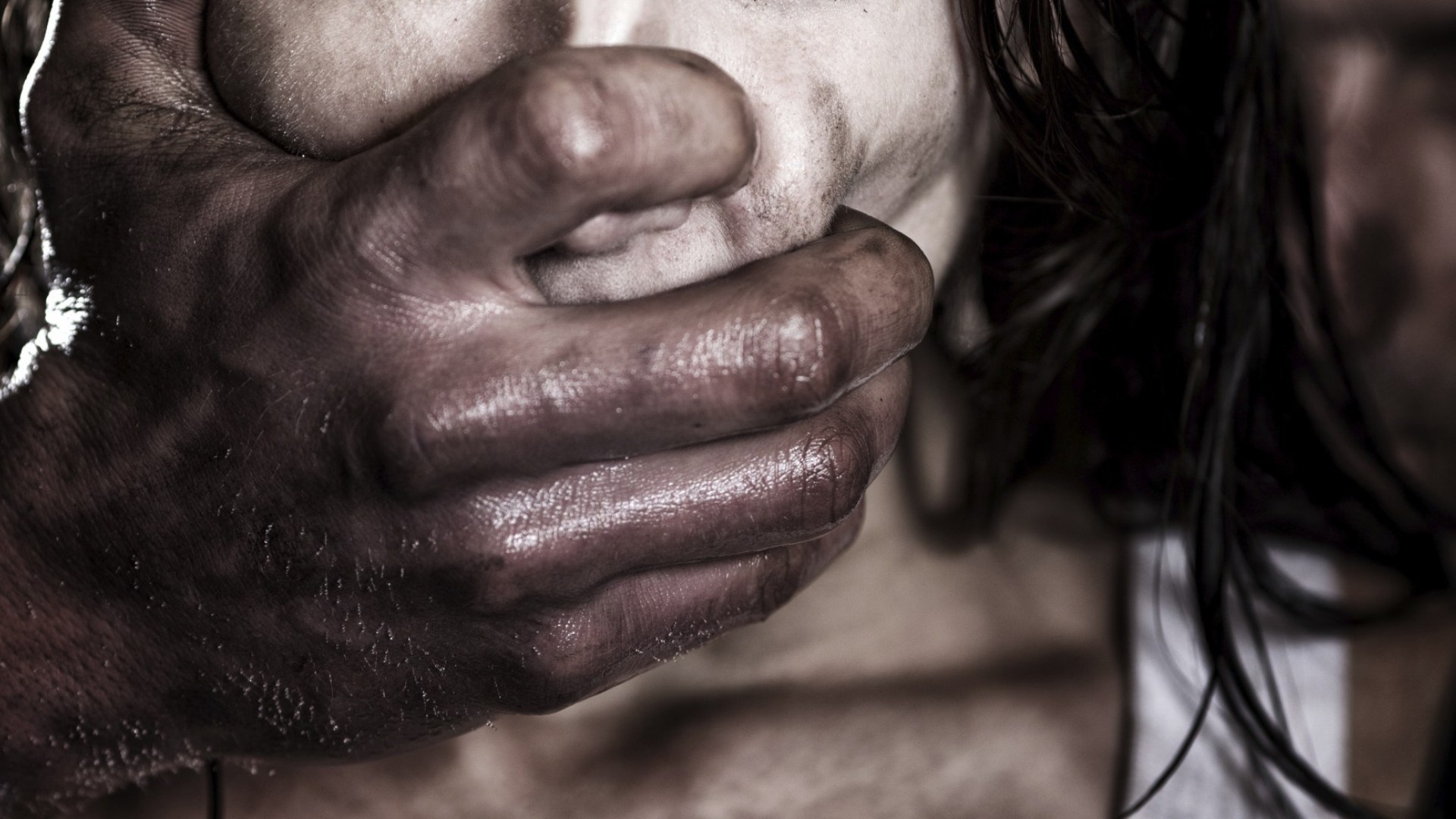Myths About Rape Rapist And Victimization: In this article, rape is defined as the penetration of the mouth, vagina or anus by any part of the attacker’s body or by an object used by the attacker, without the consent of the victim. What does without consent involve and/or what does it not require?
Myth: Rape requires physical force
Studies have shown that in the majority of rapes, the perpetrator does not use force which results in physical injuries. The threat of force and death and the intimidation inherent in gender stratification is sufficient. In reality many forms of covert coercion and force may be used in rape.
RELATED: The Rape of Hundreds Of Girls
It is the victim’s fear of the assault and its outcome that renders her passive, not compliant, and without consent. Since many victims of rape are also survivors of incest and other sexual abuse they may ‘shut down’ their emotions and bodies at the onset of a rape; they learned this ‘survival’ behaviour as children.
Other women have been socialised not to be aggressive or assertive and their comparative lack of physical strength may contribute to less of a willingness to fight back. Thus female passivity is a quite common response to male violence.
Myth: Rape requires physical resistance by the victim
This myth is unfortunately still accepted by segments of the criminal justice system. The survivor who does not evidence injuries which she acquired through resistance becomes the incredible victim. This image is a by-product of the previous myth which mandates physical force as an element of sexual assault.
The reality is far different. Almost three-quarters of the victims in a Victorian phone-in reported that ‘they felt an overwhelming sense of powerlessness. In addition, women have often been advised not to resist in order to minimise the likelihood of severe injury or death.
Rape is the only criminal act which has required resistance to be present to substantiate that a crime occurred.
Myth: Rape requires a weapon
Various surveys of victims and other studies have shown that the vast majority of sexual assaults do not involve the use of a weapon. Of the 1209 reported rapes in Victoria from 1987-1990, 82.1 per cent did not employ a weapon. Other pervasive myths concern the nature of the act of rape itself:
Myth: Rape is a sexual act
This myth is reinforced by certain stereotypes about male sexuality such as men’s alleged inability to control themselves if they are aroused. These are false images. Rape is not a sexual act. Rape is an act of violence which uses sex as a weapon. Rape is motivated by aggression and by the desire to exert power and humiliate.
Just as wife battering had to be taken out of the privacy of the home and criminalised in order to effect any change, rape must be taken out of the sexual realm and placed where it rightfully belongs in the domain of violence against women. The latter view of rape as a sexual act is perhaps one of the most pervasive, enduring, and damaging myths.
It contributes directly to another misunderstanding about the crime:
Myth: Since rape is primarily a sexual act, the victim in some way may precipitate the offence through arousing the male in some provocative manner
This erroneous belief has a serious impact on how people view the crime, the rapist and the victim. It also affects the survivor’s view of herself. She often accepts self-blame since she has not succeeded in controlling the male’s behaviour and has somehow provoked it.
It is crucially important that this myth is dispelled since it also influences the response of the criminal justice system.
Myth: Since rape is provoked by a female, it is usually a spontaneous act
This belief is obviously false since it is dependent in large part on the preceding premise concerning victim precipitation. Sexual assaults are not usually done spontaneously or impulsively; studies have shown that in most instances, rape is premeditated and often involves a pre-rape time period of interaction with the victim.
Myth: Aboriginal women (or Afro-American women in the US) are more highly sexed than ‘white’ women and therefore are always willing to have sex; thus they precipitate it by their sexual
behaviour
This myth is compatible with the theory that victims of sexual assault tend to be those with less power in the society. Myths about Aboriginal sexuality and Black African sexuality in the US justified the colonial males’ oppression, subjugation, and ongoing rape. To, reiterate, rape is an act of violence which is most commonly directed by males toward women.
The woman is not responsible for her victimisation in any way.
The Outcome of the Myths: Incidence and Under-reporting
The nature of rape makes it an extremely problematic crime to measure. Due to the ambiguity about what it is and due to the societal and criminal justice response which at best could be labelled ambivalent, sexual assault is grossly under-reported by its victims.
There is reason to suspect, from international crime surveys, that Australia has a particularly high incidence of sexual assault, certainly higher than the United Kingdom although probably second to the United States and third to the US and New Zealand.
Walker (forthcoming) reports that the combined sample of the 1989 and 1992 Australian national crime victim surveys showed that about one out of every two hundred women had experienced a rape or attempted rape during the twelve months preceding the survey.
Goldsmith (unpublished) estimates that based on 1991 Bureau of Crime Statistics figures and a 1:3 reporting rate, a woman in New South Wales has a one out of eight chance of being raped. The proportion of rapes that are reported are estimated by different sources to be any where from one in ten to four in ten.
The National Crime Victim survey found that 32 per cent of the victims of rape or attempted rape had reported the assault. This figure is similar to that found by the Victorian phone-in described by Corbett (forthcoming): two-thirds of those victims who called in had never reported the assault.
There would appear to have been either an upsurge of rape in this country or an increase in its reporting to authorities. For example, in Queensland, the sexual assaults reported to the police increased 160 per cent from 1980 to 1990 found that reported rape had steadily climbed in Australia from 1973 to 1987.
However, he notes that the increase may be attributable to legislative changes or police behaviour rather than actual incidence. In New South Wales reported rapes increased from 27.5 per 100,000 in 1981 to 70.3 per 100,000 in 1987-88.
It is speculated that this increase was a by-product of the legal changes in that state and education of police which has resulted in their increased sensitivity. Victorian reported rapes rose 23.4 per cent in 1991-92 from the previous year. This has been attributed to legal reform and increased reporting by victims.
Reasons for non-reporting
There are a variety of reasons why survivors do not report the assault. It is abundantly clear from numerous reports that rape by a stranger is more likely to be reported than assault by a partner, date or acquaintance.
In Walker’s sample (forthcoming), ‘fear, dislike of going to the police’ or a belief that ‘it was not serious enough for the police’ were the two main reasons cited. Two-thirds of the Victorian callers believed that the police would not believe them while a half thought that it would do no good.
Fear of being blamed and having their families find out have also been found to stop victims from going to authorities. If a victim believes that the police will treat her supportively she is more apt to report.
Those survivors who have suffered injuries that required medical attention and have family or friends with strong values about reporting are most likely to go to the police. Community education programs need to actively encourage all rape victims to report the crime.
A final point on under-reporting: women within Aboriginal communities, rural areas, and migrant women may be particularly reluctant to report the attack. This reluctance stems from a perceived lack of confidentiality, cultural norms, and in the latter case, lack of English.
Further, the intellectually disabled may be at particularly high risk for victimisation. Prevention programs should be constructed that are specifically geared to each of these groups.
Who is the Rapist?
A number of authors have created typologies of rapists. The variety is clearly indicative of a lack of consensus by specialists in this field. That is one reason why these will not be presented here. The other reason lies in the biased data source in these studies: imprisoned rapists.
Since it is now clear that the arrested population is not necessarily representative of the entire class of rapists because of under reporting of acquaintance and marital rape, the reliability of such typologies must be questioned.
Myth: The rapist is usually a stranger. False
An abundance of research both overseas and in Australia has established that the majority of sexual assaults are perpetrated by acquaintances, dates or marital partners. The erroneous image of the rapist as a stranger stems in part from the fact that such rapes are more likely to be reported to the police.
Thus 39 per cent of the rapes reported to Victoria Police from 1987 to 1990 were strangers. However, various victim surveys show a different picture: in Matchett (1988) 29 per cent of callers had been sexually abused by their husbands; in a US nation-wide victims survey only 22 per cent had been raped by stranger.
Green (1987) reports that in Australia more than a half of the victims knew or were related to the attacker. Figure 1 indicates that one quarter may be a fairly accurate figure since the national crime victim survey shows that only 24 per cent of the crimes of rape or attempted rape were perpetrated by strangers.

Differences have been found in elements of the sexual assault and in its impact on the victim based upon her relationship to the perpetrator. Some of these contrasts are in part responsible for the relatively low reporting of ‘date’ rape. ‘Date’ or acquaintance rapes are more likely to involve verbal threats than either a weapon or physical injuries.
The attackers are also more likely to threaten the victim about disclosing. Low levels of reporting in ‘date’ rape are also a consequence of the victim’s inability to perceive herself as a rape victim.
Several studies have shown that people are more likely to label an act as rape if the victim protested both verbally and physically early in the scenario, and if the male arranged the date but the female paid her own way.
The victim has been socialised with these fallacious concepts; even if she does label the act as a rape she may be reluctant to go to the police since she might either believe in her own partial responsibility or believe that the police would blame her. Marital rape has been found to be a component in a high number of marriages that involve physical battering.
Finkelhor (1985, p. 204) estimates that 10-14 per cent of all married women have been or will be raped by their spouse.
Although marital rape involves more violence and physical injuries than acquaintance rape, the lower rate of reporting can be attributed to both the isolation of the battered woman and to the ongoing societal assumption that husbands are immune from sexual assault charges.
Myth: Rapists have pathological personalities and tend to come from the lower class
The myth that men who rape are mentally ill is not substantiated by the data: only a small minority of perpetrators are psychopathic (Stewart 1990). Empirical research has not found any consistent type of person that distinguishes rapists from other males.
Alder (1985) looked at self-reported sexual aggression in men and found that class, education, and occupation were not significant variables. Aggression was most strongly correlated with having sexually aggressive friends.
Chappell (1989) notes that rapists are more likely to adhere to the myths about sexual assault and to hold callous beliefs about rape. Thus one can see that an important element of prevention should indeed be the eradication of these myths.
Impact on the Victim
Myth: All women really want to be raped. False. Myth: Women ask to be raped. False.
Rape is a crime which has devastating effects upon the survivor. It has been described as ‘the beginning of a nightmare’.
The potential impact of rape on the victim
Emotional
Depression, fear, anxiety, lack of trust, withdrawn, shame, self-blame (greater for acquaintance rape victims), guilt, humiliation, anger, rage, betrayal (for marital rape), perception of the world as malevolent, low self-worth, phobias.
Physical
Headaches, muscle tension, gastro-intestinal upset, genitourinary complaints, pregnancy, disease, injuries.
Behavioural
Suicidal actions, anorexia, alcohol and drug addiction, isolation (for marital rape), eating disorders, sleeping disorders, effects of phobias, nightmares.
The effects may vary depending upon a few variables: the relationship of the rapist to the survivor ; the brutality of the crime; ego strength and the support or lack of support that the victim receives from those to whom she discloses. Some of these symptoms are short-term; others have been documented as lasting for years -possibly for the survivor’s entire life.
Victims who do not report the crime experience more personality disorder, isolation and self-blame. It must also be noted that being raped by one’s spouse does not ameliorate the trauma for the victim. Studies have shown that the long term effects are in fact more severe and longer term since such assault involves betrayal, isolation and living with the rapist.
Survivors of rape must not be compelled by the myths into self-blame. Passivity, marriage, victim’s appearance or behaviour should not be interpreted as consent.
Prevention: Changing Attitudes and Behaviour
Societal beliefs about rape are in large part a by-product of the large amount of misinformation and mythology about sexual assault. They are also the result of other values and behaviours in the culture.
Chappell (1989) reports that cross-cultural studies have found that rape is most prevalent in cultures with low female power and authority and where masculinity is expressed with violence.
Some authors have described Australia as one of the most misogynist countries in the world. Historically, female convicts were released to fulfill the needs of the male immigrants with ‘an official endorsement of rape’. Thus, Australia’s history and the persistence of certain values and gender roles in the culture would conform to the high risk environment for rape.
Misogyny is also derived from the emphasis upon aggression in the enculturation of males which is manifested in the type of sports which are popular. Males are more comfortable with males; they tend to socialise and communicate at a non-intimate level with other men; and they are apt to have a low regard for females.
The latter is evidenced by both the type of verbal comments directed at women and the high frequency of physical violence toward female partners that has been well documented. Australia is a patriarchal society with a concept of machismo and male domination.
In other cultures, this gender stratification is coupled with a code of gallantry and respect toward females that is often lacking in this country.
The cultural norm is for women to submissively receive sex and her unwillingness to be disregarded: ‘A real man won’t take no for an answer.’ Combine all of this with a cultural endorsement of violence as a means of solving interpersonal conflict and rape rates are undoubtedly high.
Therefore, rape is an act of domination which cannot be seen as isolated from the patriarchal fabric of the society in which it takes place. Prevention and reporting require attitudes about the nature of rape and the nature of male/female relations to change.
The beliefs that promulgate male violence need to be changed and women’s relatively powerless position within Australian society should be radically modified.




